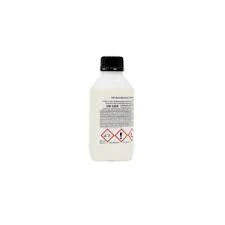flocculant water treatment
The Role of Flocculants in Water Treatment
Water is a vital resource for life, and ensuring its quality is paramount for human health and the environment. Among the various technologies employed in water treatment, the use of flocculants has gained significant attention due to their effectiveness in enhancing the removal of suspended solids and improving water clarity. This article explores the role of flocculants in water treatment, their mechanisms, benefits, and applications.
Understanding Flocculants
Flocculants are substances that promote the agglomeration of fine particles in water, leading to the formation of larger clusters known as flocs. These flocs can then be easily removed from the water, either through sedimentation or filtration. Flocculants can be classified into two main categories inorganic flocculants, such as alum and ferric chloride, and organic flocculants, including polyacrylamides and natural polysaccharides.
Mechanisms of Action
The effectiveness of flocculants relies on several key mechanisms 1. Charge Neutralization Many colloidal particles carry a negative charge, which repels other particles. Flocculants, particularly cationic types, neutralize these charges, allowing particles to come together and form flocs. 2. Bridging Organic flocculants, especially those with a high molecular weight, can create bridges between particles, facilitating the agglomeration process. 3. Hydrophobic Interaction Some flocculants can enhance the hydrophobic properties of particles, aiding in their aggregation.
These mechanisms work in tandem to improve the efficiency of solid-liquid separation processes in water treatment.
Benefits of Using Flocculants
1. Improved Water Quality The primary benefit of using flocculants in water treatment is the significant improvement in water quality. By effectively removing suspended solids, flocculants help in reducing turbidity and improving the aesthetic quality of water, making it more appealing for consumption and recreational use.
2. Reduction in Chemical Usage The use of flocculants can lead to a reduction in the amount of coagulants needed in a treatment system. This can result in lower chemical costs and decreased production of sludge, which is often a byproduct of the coagulation process.
flocculant water treatment

3. Enhanced Settling Rates The formation of larger flocs results in improved settling rates, which can lead to more efficient sedimentation in clarifiers and reduced retention time in treatment processes.
Applications in Water Treatment
Flocculants are widely used in several facets of water treatment
1. Municipal Water Treatment In drinking water treatment plants, flocculants play a critical role in removing particulate impurities and pathogens, ensuring the water meets safety standards.
2. Industrial Wastewater Treatment Industries such as mining, food processing, and pulp and paper manufacturing utilize flocculants to manage the large volumes of water produced and to minimize environmental impact through effective effluent treatment.
3. Sludge Management Flocculants can be used to condition sludge prior to dewatering processes, improving the efficiency of solid-liquid separation.
4. Stormwater Management In the treatment of stormwater runoff, flocculants assist in removing sediments and pollutants, enhancing the quality of water released into natural bodies.
Conclusion
Flocculants play a crucial role in modern water treatment processes. Their ability to facilitate the removal of suspended particles leads to enhanced water quality and operational efficiencies. As water scarcity and pollution become increasingly pressing issues, the continued development and application of effective flocculants will be essential in safeguarding our water resources. By integrating flocculants into water treatment strategies, communities and industries can contribute to a more sustainable and clean water future.
-
Pbtc Scale InhibitorPBTC: A Scale Protector for Industrial Water TreatmentNewsAug.05,2025
-
Organic Phosphonate: An Efficient Defender in the Field of Scale InhibitionNewsAug.05,2025
-
Hydrolyzed Polymaleic Anhydride: Green Pioneer in Scale Inhibition FieldNewsAug.05,2025
-
PAPEMP Polyamino Polyether Methylene Phosphonic Acid For SaleNewsAug.05,2025
-
Flocculant Water Treatment: A Pioneer in Purification in the Field of Water TreatmentNewsAug.05,2025
-
Benzyl Isothiazolinone: An Efficient and Broad-Spectrum Antibacterial Protective GuardNewsAug.05,2025





